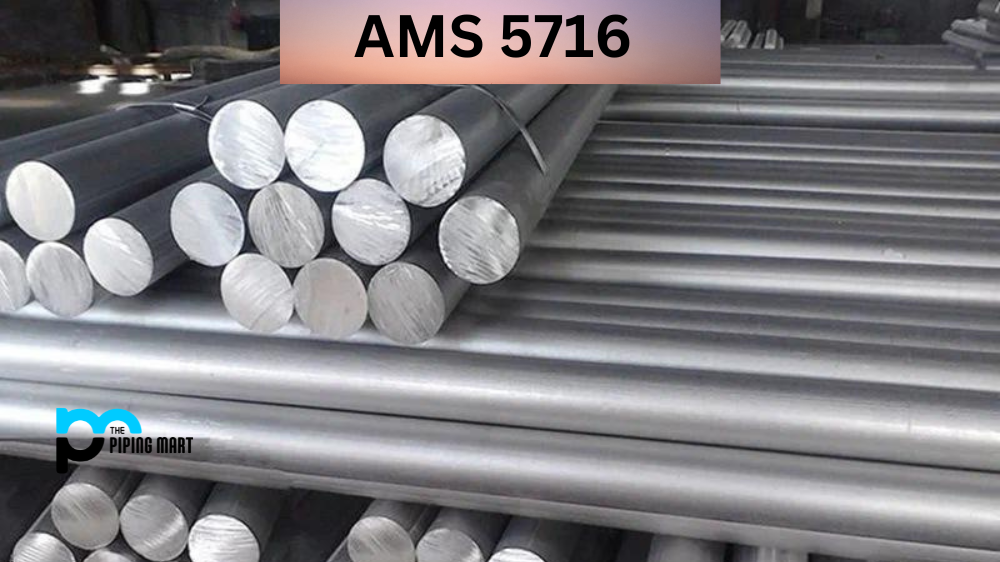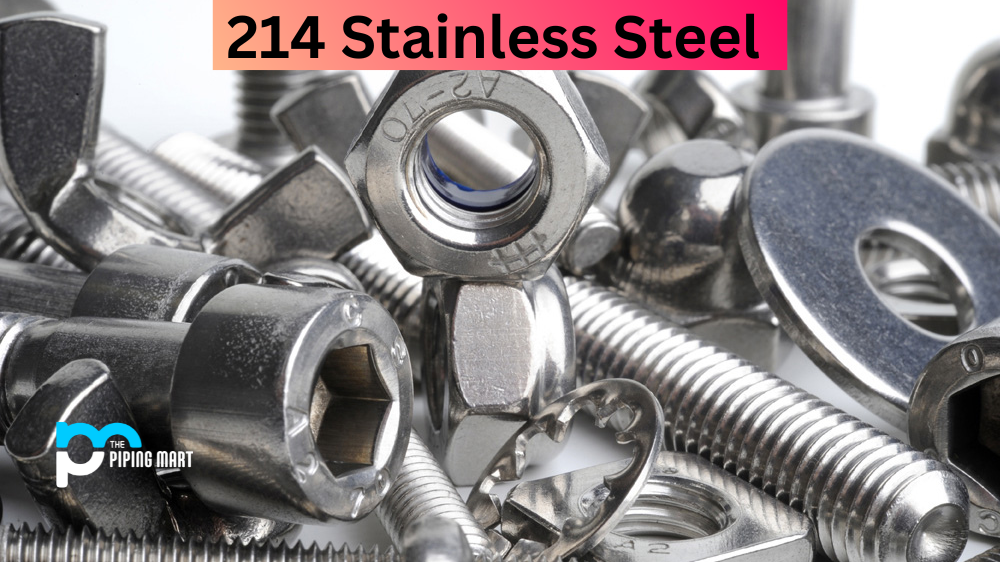AMS 5716 is a popular steel alloy known for its exceptional mechanical properties, hardness, and corrosion and wear resistance. It is a high-grade material used in aerospace, automotive, industrial, and other applications that require superior strength and durability. In this blog post, we will explore the composition, physical and mechanical properties, uses, and heat treatment process of AMS 5716.
What is AMS 5716?
AMS 5716 (also known as 330 Stainless Steel) may sound like a confusing technical term, but it’s an incredibly important material specification for aerospace professionals. This standard outlines the chemical and physical properties required for steel alloys to manufacture critical aerospace components, such as aircraft engines and landing gear. Simply put, AMS5716 is essential for ensuring the safety and reliability of aircraft when we take to the skies. Thanks to precise standards like this, we can be confident that air travel remains one of the safest forms of transportation in the world today.
What Form is AMS 5716 Available at Piping Mart?
- Nut
- Bar
- Bolt
- Pipe
- Screw
- Tubing
- Valves
- Washers
- ERW Pipes
- Fasteners
AMS 5716 Composition
AMS 5716 material is a low-alloy steel that contains about 2.5% nickel, 0.75% chromium, 0.75% molybdenum, and 0.32% carbon. It also contains small amounts of other elements, such as manganese, silicon, phosphorus, and sulfur. The low carbon content makes it easier to weld and form than high-carbon steels. The alloy’s composition creates a fine-grained microstructure responsible for its high strength, toughness, and corrosion resistance.
| Element | Content (%) |
|---|---|
| Iron, Fe | 42 |
| Nickel, Ni | 36 |
| Chromium, Cr | 19 |
| Manganese, Mn | 2 |
| Silicon, Si | 1.13 |
| Carbon, C | 0.080 |
| Phosphorous, P | 0.040 |
| Sulfur, S | 0.030 |
AMS 5716 Physical Properties
AMS 5716 has a density of 7.85 g/cm³ and a melting point of 1450°C. Its thermal conductivity is around 24 W/mK, and its thermal expansion coefficient is 11.9 x 10^-6/K. The alloy has excellent resistance to oxidation and sulfidation at high temperatures and is resistant to many organic and inorganic chemicals.
| Properties | Metric | Imperial |
|---|---|---|
| Density | 8 g/cm3 | 0.289 lb/in³ |
AMS 5716 Mechanical Properties
AMS 5716 tubing is a high-strength material with a yield strength of 827 MPa and a tensile strength of 965 MPa. It has high flexibility and toughness, making it ideal for critical applications. The alloy’s elongation at break is 15%, and its hardness can range between 35-40 HRC, depending on the heat treatment process.
| Properties | Metric | Imperial |
|---|---|---|
| Tensile strength, ultimate | 550 MPa | 79800 psi |
| Tensile strength, yield (@0.2%) | 260 MPa | 37700 psi |
| Modulus of elasticity | 197 GPa | 28600 ksi |
| Poisson’s ratio | 0.27 – 0.30 | 0.27 – 0.30 |
| Elongation at break (in 50 mm) | 40% | 40% |
AMS 5716 Thermal Properties
| Properties | Metric | Imperial |
|---|---|---|
| Thermal expansion co-efficient | 14.4 µm/m°C | 8 µin/in°F |
| Thermal conductivity | 12.5 W/mK | 86.8 BTU in/hr.ft².°F |
AMS 5716 Equivalent
Other designations that are equivalent to AMS 5716 include the following.
- AMS 5592
- 330 stainless steel
- ASTM B366
- ASTM B511
- ASTM B512
- ASTM B535
- ASTM B536
- ASTM B546
- ASTM B710
- ASTM B739
- DIN 1.4333
- DIN 1.4864
- SAE 30330
- SAE J405 (30330)
- SAE J412 (30330)
AMS 5716 Uses
AMS 5716 is commonly used in aerospace and aircraft components, such as turbine blades, compressor discs, and shafts. It is also used in industrial applications, such as gearboxes, rocket motor casings, and power generation equipment. The alloy’s high strength, toughness, and corrosion resistance make it ideal for applications that require reliable performance under extreme conditions.
AMS 5716 Heat Treatment
The heat treatment process of AMS 5716 involves annealing, normalizing, tempering, and quenching. Annealing involves heating the alloy to around 845°C and cooling the material slowly in a furnace. Normalizing involves cooling the heated alloy in the air to obtain uniform microstructure and maximum flexibility. Tempering involves reheating the quenched alloy to a specific temperature and holding it to obtain desired hardness and toughness. Quenching involves rapidly cooling the heated alloy in a liquid medium, which results in a hardened microstructure.
Conclusion:
AMS 5716 material is a versatile, high-performance steel alloy widely used in aerospace, automotive, and industrial applications. It is known for its excellent mechanical properties, corrosion, and wear resistance. Understanding the composition, physical and mechanical properties, use, and heat treatment process of AMS 5716 are vital to ensure optimal and reliable performance in critical applications. With the right handling and treatment, AMS 5716 can meet the demands of the most challenging and demanding environments.

Abhishek is a seasoned blogger and industry expert, sharing his insights and knowledge on various topics. With his research, Abhishek offers valuable insights and tips for professionals and enthusiasts. Follow him for expert advice on the latest trends and developments in the metal industry.




